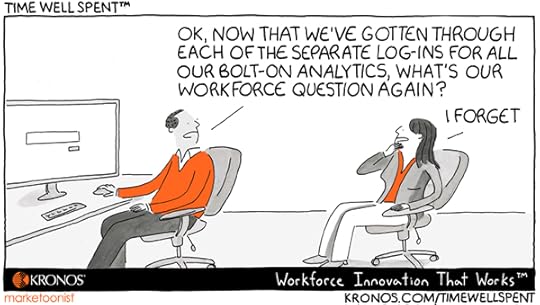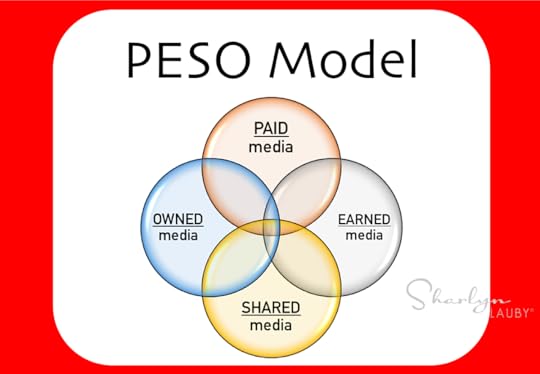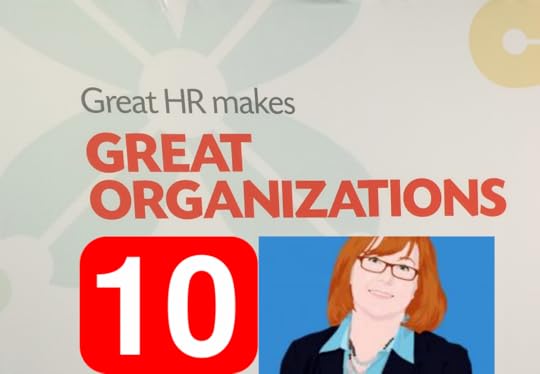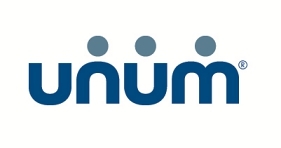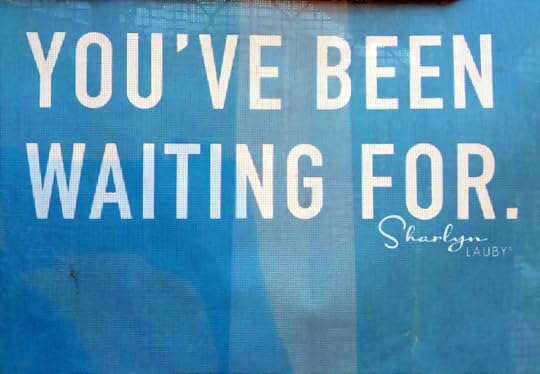Sharlyn J. Lauby's Blog, page 117
May 29, 2018
Employee Engagement and Commitment Are Not the Same Thing
As recruiting remains a challenge, I believe organizations will focus their resources toward making sure that they can keep the employees they have. Just like it’s easier to retain a customer (versus getting a new one), organizations will realize the same about employees.
So retention will be a priority for companies, which means employee engagement will be a priority as well. Because companies cannot keep employees who are not engaged with the business. Please note: I said engaged, not committed. As I spend more time thinking about it, engagement and commitment are two different things.
I know, I’m guilty of using the terms interchangeably. But I think it’s time we draw the distinction. As a starting point, I looked up both definitions.
Employee Engagement: The intersection of maximum contribution for the company and maximum satisfaction for employees. It’s a sustainable level of high performance that benefits both parties.
Organizational Commitment: An employee’s positive emotional attachment to the organization.
I can see how a person could feel a positive connection to the organization but not necessarily engaged. I think about some of my former employers with great fondness. Keyword there being “former” employers. Even though I enjoyed working there, it wasn’t enough to keep me there. That’s where I think companies could get lulled into a false sense of “we have a super duper engaged workforce” when the reality is, the company has a lot of people who are proud of their affiliation with the company.
In thinking about the definitions, it seems to me that employee engagement comes from a different place. Employees do work that they know has value or meaning. It’s satisfying work. In addition, the company acknowledges the employee’s contribution as being valuable. Both pieces need to exist. Have you ever worked someplace where you knew that you were doing great work, but no one else seemed to notice? I have and that’s not engaging (at least to me it wasn’t). It’s not enough just for the employee to know they’re doing good work. The company needs to know it as well.
Now, if my line of thinking makes sense, then it’s possible that organizational commitment can lead to employee engagement. But I’m not sure it works the other way around. Which is why organizational efforts to improve culture with bean bag chairs, open office environments, free food, and bring your pet to work day are great for building commitment but not engagement. Let me say, this doesn’t mean any of these things are bad or wrong. They have the ability to build a foundation – which needs to happen.
But to truly build employee engagement, companies need to make the investment in activities that create the win-win. Employees need the tools and resources to do their jobs well. Or they won’t be satisfied with their work. And managers need the tools and resources to communicate and coach employees. So they know that the work they do brings value. “No news is good news” isn’t how employees learn the value they bring to the company.
Regardless of what you think of the term employee engagement, it’s an important concept. And it’s a necessary ingredient for employee retention. Companies cannot afford to ignore it. Too much talent will leave the organization.
Image captured by Sharlyn Lauby in Dallas, TX
The post Employee Engagement and Commitment Are Not the Same Thing appeared first on hr bartender.






May 25, 2018
Technology System Design Needs Both Form and Function – Friday Distraction
(Editor’s Note: Today’s article is brought to you by our friends at Kronos, a leading provider of workforce management and human capital management cloud solutions. Kronos announced this week that they were named by Forbes as . Congratulations to them! Enjoy the article.)
I couldn’t resist sharing this Time Well Spent from our friends at Kronos with you today. As some of you know, Mr. Bartender and I recently moved from South Florida to the northern part of the state. As such, we’ve spent a lot of time uninstalling and reinstalling equipment, which comes with more than our fair share of two-factor authenticating our log-ins.
Don’t get me wrong. Technology security is incredibly important and I’m really glad that these measures are in place. But when form and function seem to collide, it does get frustrating. Organizations can reduce user frustrations by:
Setting realistic expectations. Some organizations sell technology as perfection, when the truth is . . . it’s not. That doesn’t mean technology doesn’t offer value in compliance, administration, scalability, and more. Setting the right level of expectation can keep users frustrations at a realistic level. And that’s just good for everyone!
Give users options. Personally, I love it when technology gives me the ability to do a little troubleshooting on my own before having to call someone. It’s possible I can fix my own challenge (and learn for the next time it happens.) Organizations should find more ways to let users be in control of their technology.
Embrace the quirks and bugs. This goes a little bit with the first one about setting expectations. I believe all technology has little nuances. That’s part of what makes it unique. It’s part of my user experience to figure out those nuances or bugs and how to work around them. I really love it when technology companies embrace their quirks and even tell you work-arounds.
Ideally, we want technology solutions that give us security as well flexibility. But that doesn’t mean they have to be perfect. It’s about creating a user experience that both the provider and the user can enjoy and even champion, while keeping frustrations to a minimum.
The post Technology System Design Needs Both Form and Function – Friday Distraction appeared first on hr bartender.






May 24, 2018
Accomplish Your Recruiting Goals: Think Like a Marketer
We all know recruiting is tough right now. No need to belabor the point. But that doesn’t mean we shouldn’t talk about it. We need to! We should focus our attention on finding solutions that will fill our talent pipeline. Today, I want to share a new model that might provide some creative inspiration towards those solutions. And a technology product that can make implementing it easy.
The PESO Model
I discovered the model in a blog post written by Gini Dietrich on the site Spin Sucks, the PESO Model outlines four different types of media: paid, earned, shared, and owned. While the model talks about media in terms of marketing media, we can use the principles for our recruitment marketing.
Paid media is exactly what it says, it’s the content that the company pays for. An example is the GE television ad featuring Molly. It could also include a sponsored ad on LinkedIn or an email newsletter to the individuals in your talent pool.
Earned media is publicity or coverage that others write about the company. An example is when someone from the company speaks at a conference about a program they’ve developed to improve diversity recruiting. Or when the organization wins a Great Place to Work award and the local news writes about it.
Shared media happens when content is shared by employees, customers, fans, etc. One example would be your employee referral program. Another is when employees share job openings on their LinkedIn profile or Twitter account.
Owned media refers to websites, blogs, etc. that are owned by the company. This includes your career portal, applicant tracking system, and company websites.
You probably noticed that it’s possible for some marketing collateral to fall into two (or more!) categories. For example, if the company creates a recruiting video for their own career portal, that’s owned media. But if they decide that they’re going to run the ad on television, then it becomes paid media.
I must admit I like this model because it has balance. As a talent acquisition professional, I should be thinking about getting all four types of media into my recruitment marketing strategy. People today consume information in so many different ways and on a variety of devices. Having a multi-faceted approach just makes sense.
Implementing a Multi-Media Recruiting Strategy
The challenge is finding the time and the media opportunities. Let’s face it, we aren’t all sitting around with extra time on our schedule to do the research. That’s where technology solution HRMarketer comes in.
HRMarketer is a marketing and advocacy platform specializing in the human resources space. I was first introduced to their product because I’m a consultant and its primary purpose is to help B2B (business-to-business) organizations (like ITM Group, Inc.) find and manage marketing opportunities. If you’re a consultant or provide services in the human resources space, you might want to consider using them to assist with your company’s marketing efforts.
But if you’re not a consultant, that doesn’t mean HRMarketer doesn’t have something for you. Because HRMarketer is focused on the human resources market, they know about the events, conferences, influencers, etc. in the HR space. That means for organizations that want to distribute talent acquisition and recruiting messaging, HRMarketer can provide a place to start and manage your multi-media promotions.
I do believe the only way to truly appreciate what HRMarketer does is by scheduling a demo, but let me share with you three things I really like about their product:
It maintains a current list of conferences and events related to human resources. You can apply to speak or get general conference information for professional development opportunities. I’m always looking for new events (in addition to the regulars) to keep my skills current.
The platform allows you to schedule social media messages on LinkedIn, Twitter, and Facebook. It’s become very acceptable to preschedule messaging. And organizations will want to send out their messages more than once. This can be a huge time saver!
Lastly, the site allows you to follow blogs and other news outlets. We know that our social media accounts cannot be all about us. If you’re looking for some general information to add to your social media content, this is a place that will help you curate good content to share.
As recruiting continues to challenge us, we must find new strategies to accomplish our goals. The PESO model can offer us a fresh look at our recruitment marketing. And products like HRMarketer can help us turn the strategy into reality.
The post Accomplish Your Recruiting Goals: Think Like a Marketer appeared first on hr bartender.






May 22, 2018
Bookmark This! The GDPR Compliance Edition
Last week, I shared with you an interview with Tom Wetherill from Unum’s United Kingdom offices about the General Data Protection Regulation (GDPR). The compliance deadline is Friday, May 25, so I thought it appropriate to share a few more resources you might find helpful.
Undercover Recruiter published an article on “Why GDPR and GDPR-Compliance Matters”.
The Society for Human Resource Management (SHRM) has some great GDPR information in their Resources and Tools section:
Key Questions About Employee Information Notices Answered
8 Aspects of Compliance: A Brief Guide for HR Functions
Our friends at Criteria Corp did a blog post recently on GDPR Compliance: What You Need to Know.
I’ve mentioned to you before that I’m reading a few project management blogs. One of them, A Girl’s Guide to Project Management, wrote a post on the “10 GDPR Questions to Ask Before Starting a New Project”.
Kate Bischoff and Ultimate Software teamed up to present a webcast on “GDPR for HR and Payroll: What’s Next for the Workplace?” This recording is preapproved for SHRM and HRCI recertification credits.
TalentSoft has an on-demand webinar titled “Getting Ready for the GDPR! What HR Needs to Do Now”. They also have an ebook “Data Privacy: A practical Guide to the N°1 Topic in HR & IT” that could be helpful as well.
MetricStream has a white paper on GDPR Trends and Predictions for 2018.
Here’s one you might want to pass along to your marketing colleagues: Christopher S. Penn’s post on GDPR 101 for Marketers. And keep it handy for those times when HR needs to think like a marketer.
The General Data Protection Regulation is a big deal for everyone. It wouldn’t surprise me if other countries adopt these same rules at some point in the future. Regardless of company size and location, it has the potential to impact your organization. Get educated about the regulation and make sure that the rest of the management team stays current as well. Which leads me to my last point…
HR Bartender enjoys a global readership. So, we want everyone who reads the blog to know that we don’t sell our subscriber list to anyone. We don’t do any remarketing or retargeting advertising. And, any time we ask for your email (like for a subscription list), it will be a double opt-in. Our philosophy is that we’re going to follow the strictest privacy rules out there. We hope that you will continue to enjoy reading HR Bartender. Cheers!
Image adapted from one found on EU General Data Protection Regulation
The post Bookmark This! The GDPR Compliance Edition appeared first on hr bartender.






May 20, 2018
10 Things I Am Packing in My #SHRM18 Conference Bag
Shannon Tipton over at Learning Rebels did a great post titled, “What’s in My Conference Bag? ATD ICE 2018”. It’s a nice reminder to help you plan your conference strategy. Since the next big event I’m attending is the Society for Human Resource Management (SHRM) Annual Conference, I thought I’d create my own list.
Here are the top ten things I take with me when I travel to conferences.
The “bag”.I will admit, I rarely carry the official conference bag. But I do bring with me a backpack or tote that will sufficiently hold my conference stuff. It needs to be comfortable to walk around with and durable. I have a classic black Vera Bradley tote that holds up well and just recently purchased a Hershel backpack that’s nice to carry. PRO TIP: If you’re new to conferences, let me tell you . . . you don’t have to take everything a vendor wants to hand you. Ask them to scan your badge and send you the information you want. Trust me, they will.
iPhone and iPad.I like having the flexibility of more than one device. Especially if I’m planning to do a lot of typing. The smart cover for my iPad is terrific. Oh, and make sure you download the SHRM conference app ahead of time. While there will be WiFi at the convention center, it won’t be like your home or office WiFi.
Charger, cords and plug. Yes, I know this is low-hanging fruit, but I’m amazed at the number of people who don’t do it. They have the cord, but no plug. Or the charger and no cord. I just purchased an Anker portable charger which does a great job. And I love this Belkin rotating plug. It allows me to share an outlet with friends.
Business cards. Sometimes you meet someone at the event don’t have time to chat but want to stay in touch. Grab their business card then connect with them on LinkedIn. Always, always, always have a handful of business cards available. PRO TIP: Don’t have business cards? There’s still time to order a nice MOO Card with your contact info and they will arrive in time for the conference.
Notebook. As much as I love technology, I also like taking notes on paper. There’s some research that shows writing things down can be the key to remembering important information. So, I love it when vendors provide a small Moleskine type notebook. PRO TIP: I like to tuck a Fedex shipping label in my notebook so I can mail home books, swag, vendor materials, etc.
Pens and highlighters. There’s nothing better than writing with a nice pen. That doesn’t mean it has to be expensive. It just means nice. ‘nuf said.
Water bottle. In an effort to be more eco-aware, I try to take water bottles with me versus buying bottled water onsite. It’s also great for my budget. My new go-to is S’well or those like it. It keeps beverages cold and has a secure lid.
Insta-beverages. You guys know I’m a tea person and good tea is hard to find on the road. So, I bring tea bags with me. I also stocked up on matcha chai singles during Teavana’s close out sales. That way when I want some caffeine, but the coffee shop lines are too long…I’m covered.
Snack. Along the same line of having a beverage option ready, I also try to have some sort of snack. If the lines are too long for lunch or the lunch options don’t appeal to me, I’ll have a protein bar or some trail mix for lunch. It takes off the edge and I’ll just have an early dinner.
Something to pass the time. There are moments when I’m just waiting – maybe before a general session, or for a bus back to the hotel, or I just want a few moments to myself. I try to have something that serves as a little distraction. Something fun like Sudoku or Neko Atsume. There’s no rule that we have to learn all the time.
Going to conferences is educational, inspirational, and at times, just plain fun. But it helps to be prepared. SHRM Annual is a large event. This isn’t one of those, “Oh, I forgot that…let me pop over to my room and get it.” So, plan ahead and have a wonderful time.
The post 10 Things I Am Packing in My #SHRM18 Conference Bag appeared first on hr bartender.






May 18, 2018
Learn How to Teach – Friday Distraction
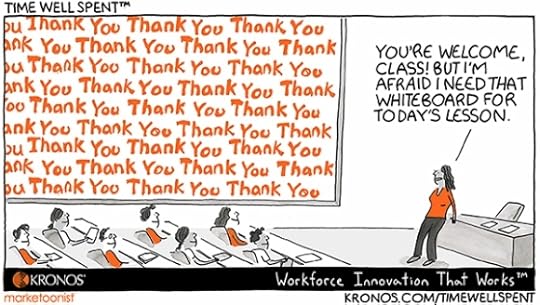
A huge thanks to our friends at Kronos for this Time Well Spent.
Earlier this month was Teacher Appreciation Week. You might have seen some hashtags with #ThankATeacher on Facebook and Twitter. At least, I hope you did. Education professionals, like teachers, play an important role in our personal and professional lives. Many of today’s teachers go far above and beyond the job description to make sure that students get a good education along with the tools they need to learn.
But like so many “established days of recognition and appreciation”, we should support and thank teachers all year long. That doesn’t mean I’m anti- Thank a Teacher Day. Quite the contrary, I’m all for it. I would just like to see us do it more often.
In addition, I’d like to see us recognize all of the informal teaching that happens every day as well. Let’s not take anything away from education professionals. However, since HR Bartender is a workplace blog, I’d love to talk about all the teaching that takes place inside organizations.
Every day, we learn from buddies, mentors, supervisors, managers, etc. Employees learn company rules and policies. Coworkers teach and employees learn how to complete tasks and improve skills. Supervisors and managers at every level of the organization teach employees the right and wrong way to do things through their actions.
Often becoming a good “workplace teacher” comes from our early years and school teachers. Some of us are very fortunate to have teachers with passion and patience. We have family members who challenge us to study hard and teach us the value of that effort. And regardless of where you went to school and how much school you’ve completed, teachers can help us develop a natural curiosity and desire to learn.
While I’m a little late with my blog post for Teacher Appreciation Week, my gratitude happens regularly. My teachers have helped me become the person I am today. And hopefully, the skills they’ve taught me allow me to pay it forward so others can learn. I can’t help but think that’s the greatest compliment you can give a teacher. Be a good learner so someday, whether it’s in a school classroom or a corporate training room, you can be a good teacher to others.
The post Learn How to Teach – Friday Distraction appeared first on hr bartender.






May 17, 2018
Recruiting: Are Organizations Lowering Their Expectations

I came across a post recently from The Conference Board titled, “Downskilling: Employers can no longer have their cake and eat it too”. It’s a thought provoking read. The post shares data that implies employers are lowering their educational requirements when it comes to recruiting.
While we’d like to think that employers are aligning educational requirements with the job duties, I think we can also see the logic. During the Great Recession, when companies would post a job opening and hundreds of people applied, they had to figure out a way to select candidates. As a result, companies upskilled positions – meaning they added criteria to the knowledge, skills, and abilities (KSAs)needed to qualify.
Fast forward 10 years to today when recruiting companies post job openings and get a handful of resumes. To get more applicant flow, organizations have to reevaluate the KSAs for the job.
But I don’t believe organizations have to lower their standards and downskill job requirements. If organizations want employees with a certain skill level, they need to make investments in employee training and development. Here are a few things companies can do:
Consider cognitive aptitude testing. Assessments can provide organizations with information about an employee’s ability to learn. Companies can use this information to understand if they hire an employee, will the person be able to quickly pick up concepts and skills. So instead of hiring employees with a skill, the company can provide them with the skills needed to be successful.
Enhance the employee onboarding experience. If an organization hires an employee with the idea they are going to fast-track their development, it’s important to add some of this process into onboarding. New hires know starting Day One how they are going to gain those additional knowledge and skills. They can feel confident that they will be successful in the role they’ve been hired to do.
Invest in more employee training. The idea of hiring employees and helping them gain the skills they need to do the work isn’t new. It does involve allocating resources toward training, but when those dollars are well spent, the increase in the training budget could be offset by the decrease in cost-per-hire. And that doesn’t include the positive sentiment associated with investing in an employee’s success.
When recruiting, organizations don’t have to simply settle for candidates that don’t meet their job requirements. First, employers need to make sure the job requirements are essential to do the work. Then, consider whether some of those requirements could be learned after the employee gets the job. It’s a win for employers that want to hire the best talent and a win for employees who want a job.
Image captured by Sharlyn Lauby just off Duval Street in Key West, FL
The post Recruiting: Are Organizations Lowering Their Expectations appeared first on hr bartender.






May 15, 2018
Everything #HR Needs to Know About GDPR
No matter where you are, you’ve probably seen some mention of the General Data Protection Regulation (aka GDPR). The aim of the GDPR is to protect all European Union (EU) citizens from privacy and data breaches in an increasingly data-driven world. It’s an extension of a 1995 law from a time when, I think we’d all agree, technology was vastly different.
Some readers might be saying to themselves, “I’m not in the EU so this law doesn’t apply to our organization. I’ll just skip today’s HR Bartender article.” Well, not so fast. The GDPR does have implications for organizations that have customers or employees in the EU, regardless of where your offices are located.
I asked Tom Wetherill, Unum’s head of privacy and financial in the United Kingdom, if he would share some information with us about the GDPR regulations and what it means for HR. Thankfully, he said yes.
Just as a reminder, Tom is offering general information about the new regulation, not legal advice. If you have any specific questions about how GDPR impacts your business, you should contact your friendly neighborhood counsel.
Tom, can you give readers a brief description of GDPR.
[Wetherill] I would describe GDPR as an enhancement of current data and privacy legislation. Essentially, it harmonizes the privacy laws that already existed. An important distinction, though, is the shift from directives that could be translated into law, to a regulation, which requires more-strict adherence to the terms and carries high penalties for non-compliance. It also expands individual’s rights.
If I’m based in the United States, why should I pay attention to GDPR?
[Wetherill] Globally, the European Union is looked to as a leader in data and privacy law, which means other countries and regulatory bodies are likely to move in this direction. Companies looking to ensure they are well-prepared for changes to regulation, and who want to uphold the highest data and privacy standards, would benefit from learning more about the GDPR, its provisions and possible implications.
At Unum, our U.S. teams went through the same processes to map our data, and preparations for the regulation as our U.K. team did. The GDPR does bring new territorial scope to those entities that are situated outside of the European Economic Area (EEA)and offer either goods of services to EU based residents, however, this has minimal impact on Unum Group.
Importantly, too, industries that aren’t regulated would experience a massive change with a similar law because they aren’t required to have systems and controls in place. Consider the implications now and put some processes in place to protect your company and your customers’ information.
Why would this regulation be of particular interest to human resources professionals?
[Wetherill] Human resources professionals should consider how data, particularly personally identified information (PII), is captured, stored and used at key moments for their employees, such as pre-employment data. In the U.K., HR professionals will also need to understand how individual rights have been expanded and timelines reduced and know that we are required to evidence what we do.
For example, employers will be required to more quickly provide personal data records for customers upon request. A concept that would also be of interest to HR employees regardless of geography is data minimization – which in principle means working with no more data than necessary, storing and removing it appropriately and using it for the reason it’s provided.
At Unum, this attention to trends and commitment to integrity means we’ve been preparing for a likely shift in this direction for some time, which will be a benefit to our staff as we prepare for the May implementation date.
Are there consequences if our organization doesn’t comply?
[Wetherill] Yes, there are absolutely consequences. The max penalty is 4 percent of profit for non-compliance, but the details depend on the company size and other variables. Equally damaging would be reputational risk of not complying or of suffering a data breach after having failed to take the required protocol and steps to prevent one.
Is this an opportunity for HR to partner with their Marketing department in developing a policy? Why or why not?
[Wetherill] Many of the policy implementation will rest in operations and legal, but human resources would be wise to work with marketing to ensure policies – new and existing – are clear to employees and customers alike. Likewise, it could be an opportunity to provide customers helpful resources, materials and answers to the top questions coming from the market.
Last question: When faced with implementing a huge regulation (like GDPR), what are 2-3 things that organizations should keep in mind?
[Wetherill] I mentioned earlier the preparations that the Unum UK and U.S. teams have done. Some of the things we kept in mind:
Support from every level of the business. There should be a commitment from leadership down to ensure laws like this are a top priority and that compliance is encouraged throughout the organization.
Understanding of your business and culture. You’ll need to understand the inner- workings of your operations, then undertake projects with a mind to be both comprehensive and proportionate. Look at everything but build controls and processes for the most important variables and enhance existing ones rather than ‘re-invent the wheel.’
Constantly monitor and anticipate change. Stay on top of trends and keep stakeholders informed so that by the time an implementation date arrives, you are well prepared to meet the requirements.
I want to thank Tom and the team at Unum for sharing their knowledge on this subject. I’m confident we are going to hear more about GDPR in the months to come. And if you have a moment, be sure to check out Unum’s WorkWell blog. It’s filled with articles that you can share with employees about health, wellness, careers, etc.
Image found on EU General Data Protection Regulation
The post Everything #HR Needs to Know About GDPR appeared first on hr bartender.






May 13, 2018
Getting Passed Over For a Promotion – Ask #HR Bartender
Today’s reader note is a long one, but it’s also a subject that’s come up more than one time in my career. What do you do when you’re passed over for a promotion? The story has a few nuances along the way as well.
My employer has been asking me repeatedly to accept an assistant manager position. I’ve turned it down multiple times because I wanted to go back to school. Unfortunately, school hasn’t happened yet. Now, I have a new manager (someone that I trained, BTW) and I’ve been asked again to become the assistant manager. This time, I agreed with the condition that if I get info school that I will give notice, so they can find another assistant.
All was good, I passed my background check and was ready for the title since I was already doing most the work for past months. My manager told me that when I returned from my pre-scheduled vacation that we’d start my training. While I was away, I received a text from my manager saying that she had reconsidered her decision and wasn’t going to promote anyone. She was just going to do it all herself. I thought to myself, “Whatever…that’ll be short lived.”
I just received a copy of the schedule. There is a new employee and below their name it says, “assistant manager in training”. How should I handle this? I am so angry and ready to explode for obvious reasons like being lied to, feeling betrayed, etc. There must be some kind of rule to prevent them from being able to do this especially since I have not had any disciplinary action against me. Please advise what steps I can take to stop this!! Thank you!!!
We all know there’s probably more to this story that what we have here, but I do think there’s a disconnect worth exploring. I can see both sides.
The Employee’s Side: The company has been asking repeatedly for them to consider a promotion to an assistant manager role. After much discussion, the employee decides to do it. They go through all of the paperwork, getting ready to start, and the role is pulled from them. Then, they find out it was given to someone else. They feel like their manager lied to them with the whole “I’m not going to have an assistant. I’ll do it myself.” comment. The employee was doing the company a favor by taking on the promotion to this role and now they’re angry.
The Company’s Side: We’ve pressured an employee who really doesn’t want to be an assistant manager into the job. They are going to resign the role when they sign up for school, which could be at any time. We like this employee and they do a good job, but we really need an assistant manager who is going to be in the position longer. Since the employee never really wanted this role anyway, we’ll give it to someone else and they’ll be relieved that they don’t have to do it.
You can see how these types of situations occur. Both the employee and the manager thought they were doing the right thing. Hopefully, they can take steps to resolve the matter. Here are three things to consider:
Both the employee and manager should make sure that their disagreement doesn’t impact the work of the new employee who has been given the assistant manager role. We don’t know who this person is and their skills, but they’re not a part of this.
The employee needs to decide if they really wanted this promotion or role. And if the answer is “no”, then think about whether they can move past this. Regardless of how it was communicated. I agree that the company could and should have done a better job communicating, but the bottom-line is the employee didn’t want the job.
The company should acknowledge to the employee that they communicated this all wrong. If they wanted to make a change, that’s fine – but treat the employee with respect and let them know the reasons for the decision. They still might be a little unhappy, but they do understand.
Sometimes organizations must make unpopular decisions. No one likes it. But treating people with respect is an important part of communicating the message. I believe employees can accept disappointing news when it’s delivered properly.
Image captured by Sharlyn Lauby after speaking at the SHRM Annual Conference in Washington, DC
The post Getting Passed Over For a Promotion – Ask #HR Bartender appeared first on hr bartender.






May 11, 2018
Bookmark This! Anti Harassment Edition
This post has been a long time in the works. I think it’s fair to say that #MeToo and #TimesUp movements have changed us – both individually and organizationally. While so much progress has happened in a short period of time, there are still many conversations that need to happen and a lot of action to be taken.
At this year’s WorkHuman Conference, pioneered by Globoforce, there was an incredible panel moderated by Wharton professor Adam Grant that included journalist Ronan Farrow, actor Ashley Judd, and social activist Tarana Burke. My two-cents is the panel said some things that human resources professionals, and the organizations they’re a part of, need to take very seriously.
As HR pros, we know that we have a role to play in making sure our workplaces are free from harassment. And anti-harassment policies are only the beginning. HR needs to develop the institutional courage to drive cultural change. While the comment received some laughter at the time, no one should have to tell an employee to put their penis away at work. (And just in case you’re wondering, yes, that does happen.)
It’s societal change that will address this matter. And for human resources that means doing our part in changing company culture. Because if this type of behavior is considered acceptable inside organizations, it will be considered acceptable in society.
And while I understand that movements like #MeToo and #TimesUp are about more than sexual harassment, I do believe that organizations need to review their policies and make sure that they are clear. According to a new survey from Xpert HR, more than half (53 percent) of respondents said that sexual harassment policies and training would take on a greater concern in 2018. However, while most (92 percent) have a formal sexual harassment policy, only 38 percent plan to update their policies in 2018. It makes no sense to drive a change in company culture if the basic principles that employees are supposed to follow aren’t in place. We can’t just change policies after the fact.
This is a lot to process for HR professionals. They must sort out their own feelings while helping the organization navigate through their own change. Here are some resources that might help get conversations started.
Our friend Kate Bischoff wrote a terrific article on her blog titled, “Let Go of Welcomeness”
The Society for Human Resources Management (SHRM) has several resources focused on building workplaces that are free from harassment. If you’re a member, check out the resources and tools section on the SHRM website.
Workplace Fairnessis a nonprofit organization that provides information, education and assistance to individual workers and their advocates nationwide and promotes public policies that advance employee rights.
Finally, I want to share with you a different type of resource being developed. I must admit that I wouldn’t have initially given this idea the time of day, but Tarana Burke said something during WorkHuman that really stuck with me about the positive role that pop culture can play in our lives. There’s a Kickstarter campaign going on right now calledDefine the Line – Comic Book – Sexual Harassment Training. Before dismissing the notion of a comic book, check it out. It could be a resource that resonates with people.
And that’s what matters. We must start resonating. I don’t claim to have all the answers here. But I do believe that we need to start talking and listening more. And holding ourselves and others accountable.
Image captured by Sharlyn Lauby after speaking at the 2016 MBTI Users Conference in San Francisco, CA
The post Bookmark This! Anti Harassment Edition appeared first on hr bartender.






Sharlyn J. Lauby's Blog
- Sharlyn J. Lauby's profile
- 10 followers



